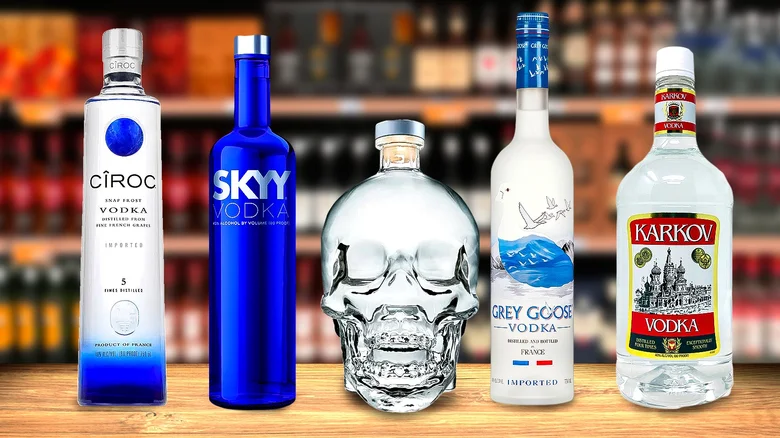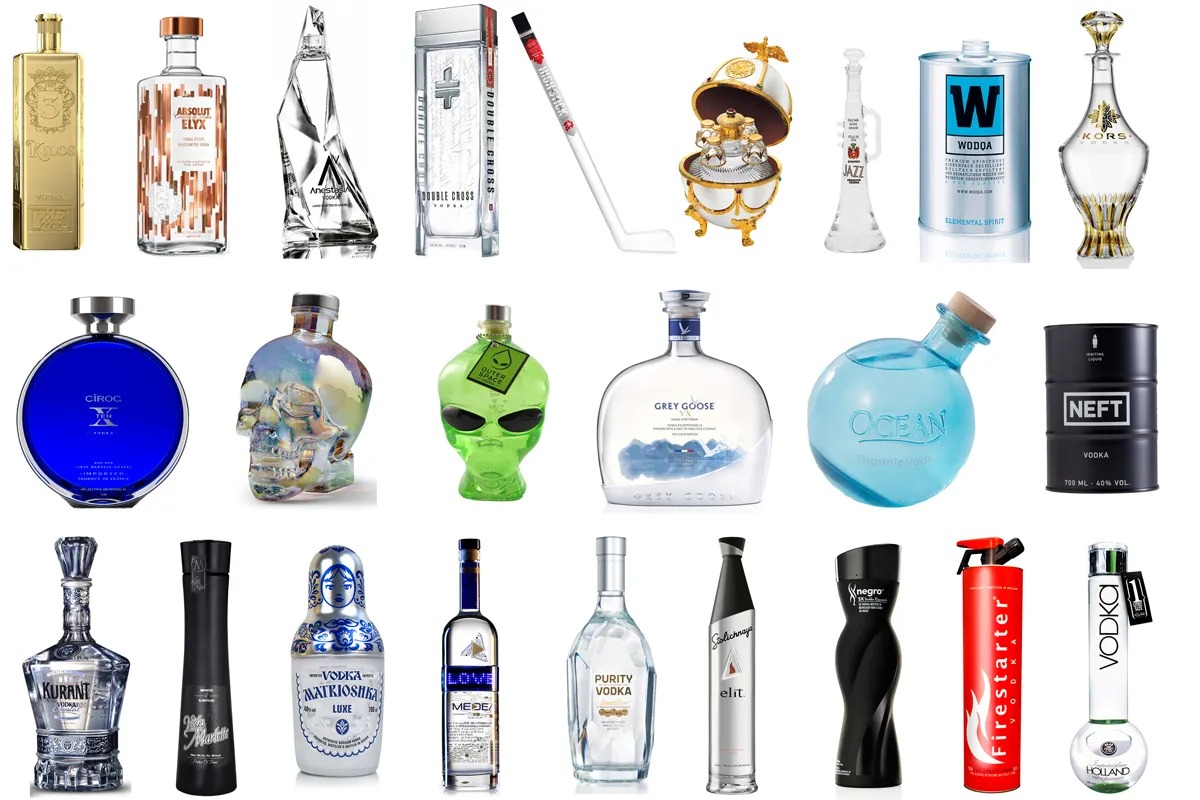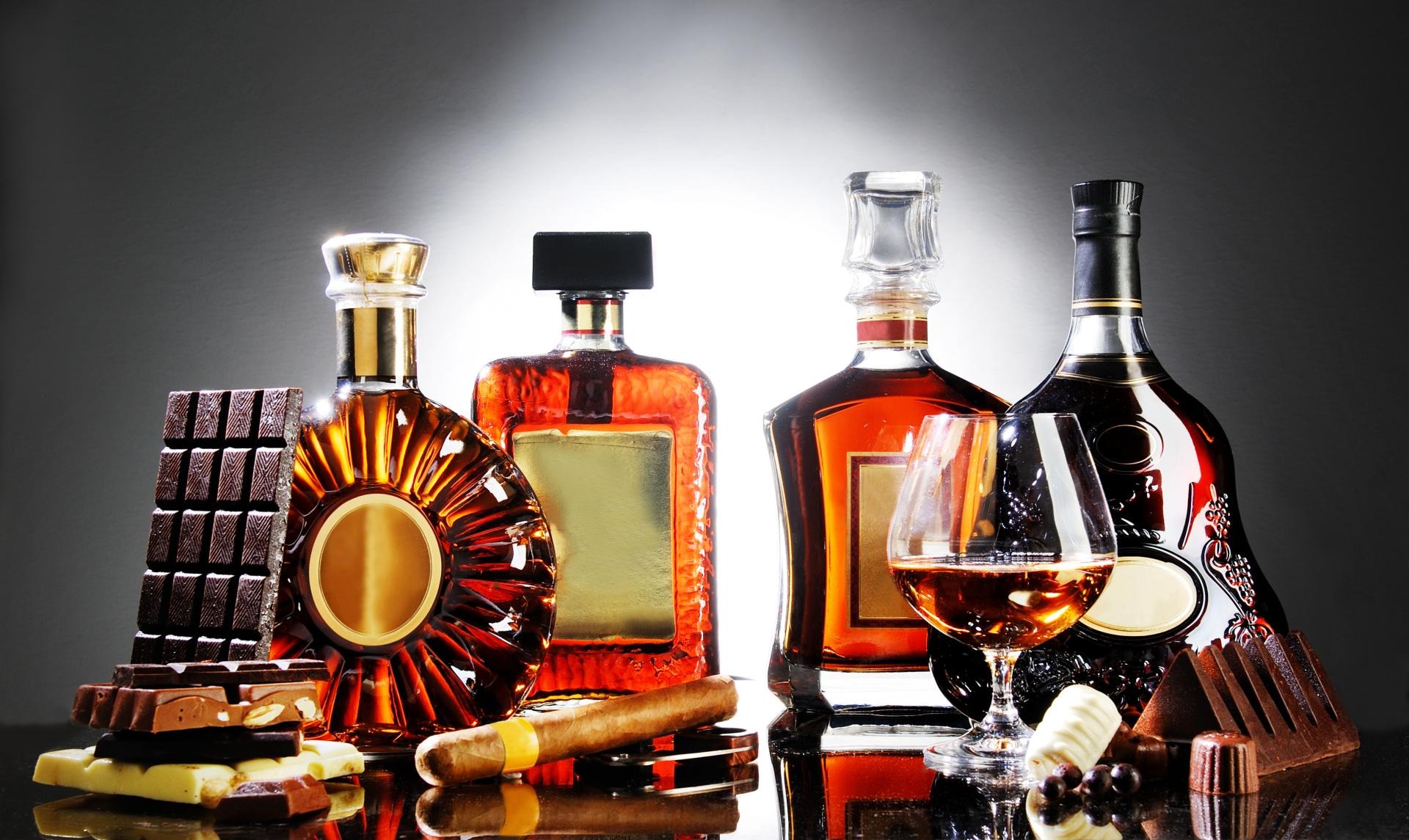Imagine walking into a bar or liquor store. Amidst the dazzling array of choices, one bottle catches your eye instantly. It doesn’t flash lights or blare a jingle; its power is quieter, more profound. That bottle’s unique design, its cool factor, its very presence, is working overtime as your silent sales superstar. In a saturated market where first impressions are everything, an extraordinary Liquor Bottle transcends mere packaging. It becomes an irresistible invitation, a tangible expression of brand identity, and the critical, often subconscious, trigger that turns a browsing shopper into a captivated buyer. This is the underestimated power of truly cool liquor bottle design.
Get Noticed on a Packed Shelf
In a crowded retail environment, a liquor bottle is far more than just packaging—it’s a brand’s most effective silent salesperson. An eye-catching bottle with unique shapes, bold colors, or interesting textures instantly stands out. This isn’t just speculation; a Harris Poll confirms that 46% of consumers associate distinctive bottle designs with higher quality, directly influencing their purchase decisions.
How a Unique Design Boosts Sales
Distinctive bottle shapes—like long necks, sleek silhouettes, or custom colors—naturally draw the eye. Market data reflects this, showing increased demand for custom glass bottles across spirits and beer brands. Beyond looks, textured finishes (such as acid-etching or engraving) invite shoppers to touch and hold the bottle. This physical interaction often transforms curiosity into a sale. High-quality materials and premium finishes also build immediate trust, with consumer feedback confirming that a bottle’s appearance directly impacts perceived brand value.
The power of bottle design is clear in Kinky Liqueur’s success. Their shift to a bold, uniquely shaped bottle with playful polka dots created a “billboard effect” on shelves. This redesign propelled them into the top-ten cordials list and secured the #6 spot in premium liqueurs for three consecutive years. Similarly, Wolf Spirit Distillery emphasizes “pickup appeal,” recognizing that when a customer physically engages with a bottle, they’re far more likely to buy it.
Visuals drive decisions: 72% of U.S. wine buyers admit label design affects their choice. Sales consistently increase when bottles stand out through striking aesthetics and tactile elements at the critical point of purchase—the store shelf.
Advice for Better Shelf Visibility
Distillers can boost visibility by using vibrant colors, unconventional bottle shapes, and textured finishes. Limited-edition or seasonal designs also create buzz. Collaborating with retailers for prime placements (like endcaps) maximizes exposure. Finally, A/B testing different designs helps identify what resonates most with shoppers.
More distillers are choosing glass for its premium feel and extensive customization options. Techniques like screen printing, spray coating, and distinctive labels enhance brand recall and encourage physical interaction.
In a competitive market, a liquor bottle’s design is a quiet sales superstar. It communicates brand identity, sparks interest, and converts a passing glance into a sale—all before the first sip.
Why a Great Bottle Creates a Feeling of Quality
Premium packaging isn’t just about aesthetics—it’s a strategic tool for shaping brand perception and building value in a crowded market.
How Premium Bottles Signal Quality
High-quality materials like heavy glass, raised surfaces, and detailed labels instantly convey craftsmanship. When customers pick up such a bottle, its weight and texture suggest care and expertise. Research confirms this: a spirit’s packaging directly influences how shoppers judge the liquid inside. Heftier bottles with intricate designs lead consumers to assume they’re buying a superior product.
Premium brands consistently leverage this effect. High-end single malts, tequilas, and names like Casamigos or Heaven’s Door use substantial, beautifully crafted bottles to justify premium pricing and create exclusivity. This taps into consumer psychology—details like weight and design subconsciously signal richer flavors and higher status. For example, sought-after 75cl spirits often command $22.50–$30.50 in the U.S., largely due to their impressive tactile and visual presence.
The Market Impact
The craft spirits boom (growing over 10% annually in the U.S.) sees more than 2,500 distilleries vying for attention, with many adopting distinctive, high-quality packaging. Globally, the liquor bottle market reflects this shift—projected to grow from $4.13 billion in 2023 to $5.38 billion by 2029, driven by demand for visually striking and premium-feeling bottles.
A well-designed bottle convinces customers a product is worth its price and cuts through shelf clutter—making packaging a silent ambassador for quality.
Tells a Story and Builds Emotional Connection
A great liquor bottle does more than hold liquid—it becomes a storyteller for the brand. When no staff is present to explain, the bottle’s design acts as a silent salesperson. Through visuals, materials, and interactive elements like QR codes, packaging communicates a brand’s roots, values, and unique identity.
How Packaging Creates Emotional Bonds
Details matter. Engravings referencing local landmarks (like Distillerie 3LACS’ tribute to Montreal’s lakes) or labels showcasing vineyard heritage instantly connect products to place and history. Historical designs or narratives directly printed on bottles make brands more memorable and shareable. These elements transform packaging into emotional touchpoints.
Why Storytelling Design Matters in Liquor Branding
Story-driven packaging builds stronger emotional ties with customers, leading to repeat purchases and brand loyalty. Unique narratives also fuel word-of-mouth—distinctive bottles naturally spark conversations and social media shares. In a crowded $284 billion global market (76% retail sales), standout storytelling isn’t optional; it’s essential for shelf cut-through.
QR codes offer depth, letting shoppers explore production methods or sustainability efforts instantly. Premium materials signal luxury while appealing to eco-conscious buyers. For craft distilleries, bold locally-inspired designs foster community pride, turning customers into brand advocates. These approaches merge tradition with modern engagement.
Infusing bottles with authentic stories transforms packaging into a powerful connector—inspiring emotional bonds and driving sales in competitive markets.
Using Liquor Packaging to Stand Out
Unique bottle designs – custom shapes, distinctive labels, and creative decorations – instantly differentiate spirits from competitors using standard packaging. These elements signal a product’s uniqueness and elevate shelf presence.
How Smart Bottle Design Lifts Your Brand
Consumers often perceive unique bottles as premium: 46% associate features like embossing, textures, or unusual shapes with higher quality. This perception allows brands to command prices of $50 or more, boosting both sales and brand image. Packaging also tells a brand’s story – Peg Leg Porker Bourbon transformed standard bottles with metal pig bartops and vibrant screened labels to showcase its heritage. Many North American distilleries act as regional “ambassadors” through locally inspired designs, building fame while introducing local culture. With rising demand for luxury spirits, brands increasingly use thick glass, intricate details, and artistic touches to signal premium quality on crowded shelves.
The global liquor bottle market reached USD 4.13 billion in 2023 and is projected to grow at 4.57% annually, driven by investments in creative, high-end packaging. Nearly half of premium spirit buyers cite packaging as a key purchase factor, proving design directly impacts sales and trust. Seasonal and limited-edition bottles generate excitement and urgency, appealing to collectors while building year-round loyalty.
Effective Sales Tactics
Distinctive shapes and textures attract attention and encourage tactile engagement. Custom graphics and premium label materials visually convey brand narratives. Luxury closures like metal hardware or custom stoppers enhance perceived value. Seasonal/limited releases foster collector communities. Prioritizing glass clarity and thickness visibly communicates quality at point-of-sale. A standout bottle does more than drive purchases – it sparks conversations, becomes collectible, fuels social sharing, and transforms customers into global brand advocates.
Fueling Social Shares and Talk
An eye-catching liquor bottle transcends its functional role—it sparks social conversations and organic buzz. In a crowded market, bold or interactive designs transform casual shoppers into brand advocates who amplify visibility through shares and tags.
How Great Bottles Drive Engagement
Distinctive bottles with unique shapes or graphics frequently appear in user-generated content on Instagram and TikTok. When customers photograph creatively designed bottles, they naturally tag friends and mention brands—delivering free exposure more authentically than ads. Data confirms this advantage: alcohol brands average 1.53% Instagram engagement (outperforming Facebook’s 0.14% and Twitter’s 0.08%), with top performers reaching 2.85%. Limited-edition releases further amplify this effect, driving measurable spikes in posts and shares while anchoring social campaigns.
Industry leaders like Tito’s, Smirnoff, and Jack Daniels demonstrate how consistent visual branding elevates engagement. Posting frequency matters—brands sharing bottle-centric content 6+ times weekly build stronger recall than those posting 2-3 times. Emotional storytelling works best: showcasing production processes, limited packaging, or designer collaborations turns bottles into collectible status symbols that audiences eagerly share.
How Customers Become Brand Fans
Creative bottle designs ignite organic conversations online and offline. User-shared photos cut through ad clutter, while memorable packaging becomes the engine for grassroots growth—extending reach far beyond traditional marketing channels. Simply put: standout bottles transform satisfied customers into a brand’s most credible promoters.
Improve the Customer Experience and Make Your Product Easy to Use
A great liquor bottle isn’t just visually appealing—it enhances how customers interact with the product. From the first touch to every pour, thoughtful packaging combines functionality with quality perception. Nearly half (46%) of consumers associate unique shapes or textures with premium quality, while 79% link glass packaging to high-end spirits. Practical design also drives decisions: 75% of buyers prefer bottles that look good and feel comfortable to hold.
Features That Enhance Usability
Ergonomic bottle shapes ensure secure grip and controlled pouring. Compact designs (like shorter gin bottles) fit easily in refrigerators while standing out on shelves. Resealable caps maintain freshness between uses, improving long-term satisfaction. Pour-friendly closures and one-handed operation simplify serving. Premium materials—heavy glass or specialty coatings—reinforce quality through tactile experience. Tech integrations like NFC chips or blockchain enable supply chain transparency, instant reordering, and interactive content access.
Brands like Peg Leg Porker and Distillerie 3 LACS award-winning bottles demonstrate how aesthetics meet practicality. Ailsa Bay Scotch uses blockchain for full production traceability via smartphone. NFC-equipped bottles allow distilleries to share brand stories or enable one-tap reorders—bridging convenience with deeper engagement.
The $4.13 billion liquor bottle market’s growth reflects demand for premium yet functional designs. Packaging that solves real user needs—easy storage, freshness preservation, effortless pouring—creates memorable experiences that transcend aesthetics. This tangible usability fosters brand recall and turns first-time buyers into repeat customers long after the last drop is poured.
Conveys Sustainability and Social Values
A liquor bottle’s design communicates a brand’s commitment to environmental and social responsibility. Modern consumers—especially younger demographics—increasingly prioritize these values when making purchasing decisions.
Sustainable Packaging: Trends and Impact
Demand for eco-friendly materials like recycled glass, biodegradable plastics, and plant-based alternatives is rising. The sustainable liquor bottle market reached $1.45 billion in 2024, projected to hit $2.46 billion by 2033 (6% CAGR). Consumer behavior reflects this shift: 58% of U.S. spirits buyers consider sustainability, with 68% purchasing based on eco-claims in the past six months. Notably, 86% of shoppers under 45 pay premium prices for sustainable packaging.
Gray Whale Gin demonstrates effective eco-storytelling—using sustainable materials, donating 1% of sales to conservation, and communicating these efforts on their packaging. Suppliers like EcoXpac, EarthLust, and Pachamama drive innovation with recycled plastics and plant-based solutions, helping brands reduce environmental footprints.
Key Sustainable Features
Recycled/upcycled glass minimizes raw material use. Plant-based or recycled labels lower production energy. Biodegradable closures reduce plastic waste. Reusable and ergonomic designs extend product lifecycles.
Transparency about eco-practices fosters consumer trust. Communicating these values through packaging helps brands resonate with socially conscious buyers—particularly millennials and Gen Z. Sustainable design is now a market expectation, directly influencing purchase frequency and brand loyalty. Ultimately, bottles that showcase environmental responsibility attract new customers while strengthening brand reputation.
Using Cool Liquor Bottle Design to Sell More
Strategic bottle design directly impacts sales and brand perception. Consumer behavior confirms this: 75% of shoppers pick up spirits based on appealing packaging, while 46% associate unique shapes/textures with premium quality. Crucially, 79% link glass bottles to high-end spirits due to their clarity and substantial feel.
Key Design Strategies to Drive Sales
Custom bottle shapes create memorable silhouettes that boost shelf standout and foster emotional connections. Tactile elements like embossing or textures invite touch while reinforcing brand identity through raised logos or patterns. Decorative techniques—hot stamping, acid-etching, screen printing, or shrink sleeves—add visual impact and perceived value. Color choices matter: Kinky Liqueur’s curvy polka-dot bottle delivered “billboard effect” visibility, propelling it into the top-10 cordials for three consecutive years. Labels should tell brand stories (heritage, production methods) where sales staff can’t. Sustainability is non-negotiable—recycled materials and eco-conscious practices appeal to 86% of under-45 buyers who pay premium prices.
The $4.13 billion global liquor bottle market grows through demand for distinctive, premium designs. Kinky Liqueur’s redesign drove significant sales growth, while brands like Peg Leg Porker and Distillerie 3 LACS earned industry awards by prioritizing design. Rising orders for long-necked bottles and clean-lined glass reflect consumer preference for modern aesthetics.
Implement strategies through acid-etching, engraving, hot-stamped metallics, ceramic labels, spray coatings, and expanded color options beyond traditional clear/brown glass.
A bottle acts as a brand’s silent salesperson. Combining custom shapes, textures, strategic colors, storytelling, and sustainability elevates shelf presence, drives purchases, and builds loyalty—proving essential in today’s competitive spirits market.
Conclusion
In today’s crowded spirits market, a bottle’s design transcends mere packaging—it’s a silent storyteller, quality signal, and emotional connector that drives decisions at the shelf. From bold shapes that command attention to textures that invite touch, from sustainable materials that resonate with values to smart tech that bridges physical and digital experiences, your bottle is the unsung hero turning browsers into buyers. As craft distillers and global brands alike harness this power, one truth remains: investing in extraordinary glass design isn’t an expense—it’s your highest-ROI sales strategy.
As a glass bottle factory specializing in custom designs, premium finishes, and sustainable solutions, we help brands craft bottles that don’t just hold spirits—they embody them. From concept to shelf, our technical expertise and innovative capabilities ensure your vision becomes a tangible, profit-driving reality.




